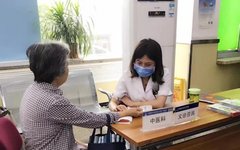 The Secrets Hidden on the Tongue
The Secrets Hidden on the Tongue
Observing Tongue Quality to Read Health

Some time ago, I shared an overview of the main components of tongue diagnosis in TCM and how we, as practitioners, interpret it. I received a call from a friend, who is also in the medical field, suggesting that I organize and share the content on tongue diagnosis in a more professional manner. His exact words were: “The medical literacy of readers is quite high now, so writing in a more professional way would benefit both those studying TCM and fans of TCM.” Following his advice, I will continue from the previous article and discuss the secrets your tongue holds from a professional perspective.
From the previous content, we learned about tongue diagnosis; in this article, we will delve deeper into the health codes hidden in tongue quality, which can be divided into spirit, color, shape, and state.
 01Tongue Spirit
01Tongue Spirit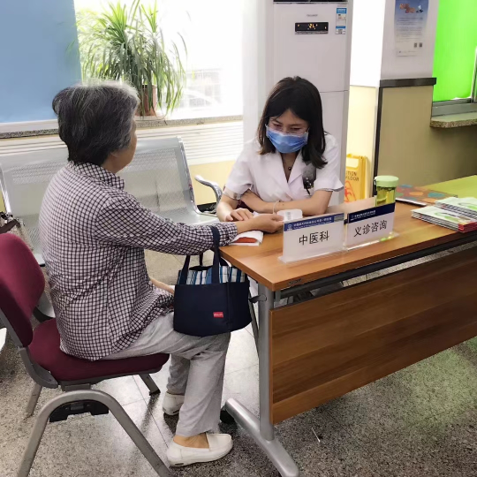
The tongue spirit includes two states: dry (ku) and flourishing (rong). A flourishing tongue (with spirit): red, moist, and flexible, indicates strong vital energy (zhengqi) and a mild condition; a dry tongue (without spirit): dull and stiff, indicates weakened vital energy and a severe condition with a poor prognosis.
 02Tongue Color
02Tongue Color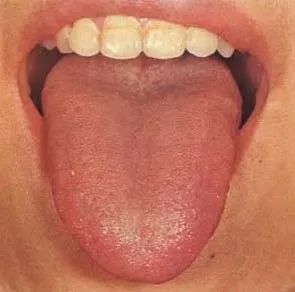
Next, we look at tongue color, which includes pale red, pale white, red, dark red, blue, and purple tongues.
Pale red tongue: the tongue is pale red and moist; generally seen in healthy individuals or those with mild conditions, indicating no damage to qi and blood. As shown in the image.
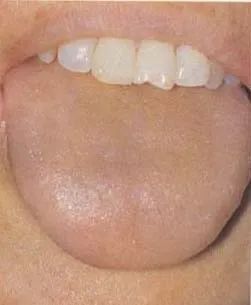
 Pale White Tongue
Pale White Tongue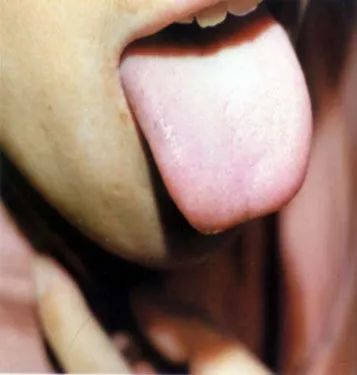
Pale white tongue: When the tongue is extended, it appears more white than red, known as a pale white tongue. Clinical significance: deficiency of both qi and blood, yang deficiency with cold dampness.
Pale white and thin—deficiency of both qi and blood; pale white and plump—yang deficiency with cold dampness;
Pale white and dry—yang fails to transform fluids;
Pale white and lustreless—spleen and stomach qi deficiency;
Dry white tongue—loss of blood and qi.
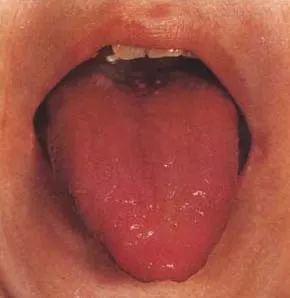
 Red Tongue
Red Tongue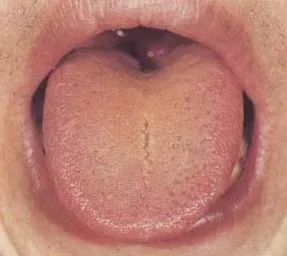
Red Tongue:slightly redder than normal tongue color.
The edges and tip of the tongue are slightly red, commonly seen in wind-heat exterior syndrome;
The tongue color is bright red, commonly seen in excess heat syndrome;
The tip of the tongue is red, indicating heart fire, while the edges being red indicates liver heat.
A thin tongue with a red color, no coating, and cracks on the surface indicates yin deficiency with heat.
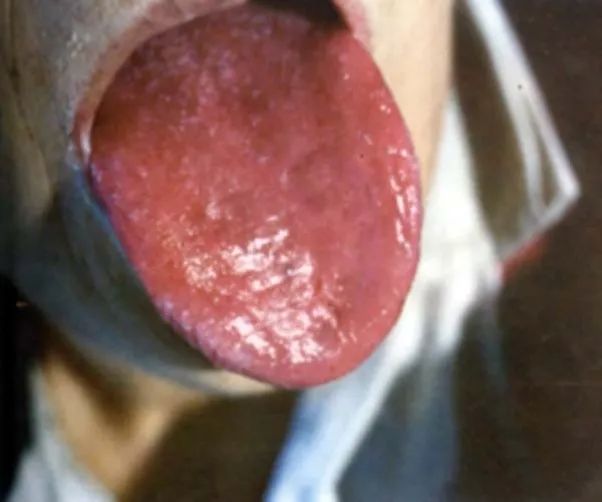
 Dark Red Tongue
Dark Red Tongue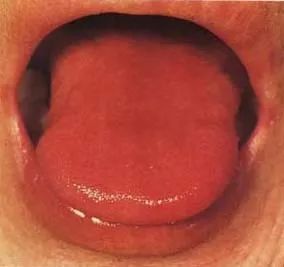
Dark Red Tongue: A deeper red color than a red tongue, or slightly dark red.
Indicates yin deficiency with heat, or excess heat in the interior; the darker the color, the more severe the heat evil.
A dark red tongue with coating often indicates warm heat disease invading the nutrient blood, or excessive internal heat in the organs.
A dark red tongue with little or no coating, or with cracks, often indicates long-term illness with yin deficiency and excess fire, or late-stage heat disease with depletion of yin fluids.
Red and dark red tongues are often seen in diseases with increased basal metabolism, such as infections, hyperthyroidism, hypertension, and diabetes.
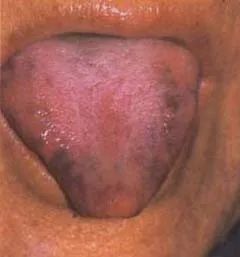
 Purple Tongue
Purple Tongue
Purple Tongue:The entire tongue appears purple, or there are local blue-purple spots.
A pale tongue with blue-purple indicatespale purple tongue; a red tongue with blue-purple indicatespurple-red tongue; a tongue with blue-purple veins indicatesvein purple tongue; a tongue with local blue-purple spots of varying sizes, not raised above the tongue surface, indicatesspot tongue.
Indicates poor circulation of blood in the body. Commonly seen in liver and gallbladder diseases, heart and lung diseases; some red-purple swollen tongues indicate excessive heat.
 03Tongue Shape
03Tongue Shape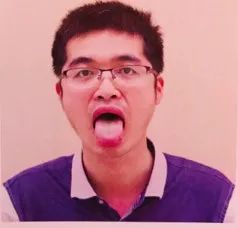
Tongue shape refers to the characteristics of the tongue’s form, including old and young, fat and thin, punctured, cracked, and teeth-marked.
Old and Young Tongue01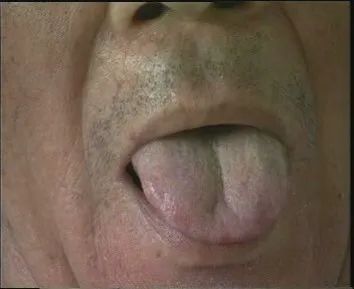
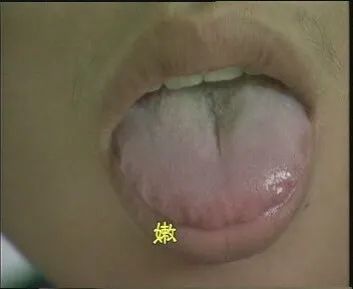
Old Tongue: Firm and aged, with rough texture and dark color; often seen in excess conditions.
Young Tongue: Soft, plump, delicate, and light-colored; often seen in deficiency conditions.
Fat Tongue01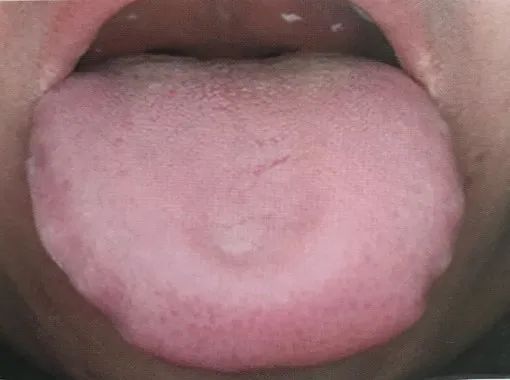

Pale Fat Tongue (left): The tongue color is lighter, the tongue body is plump and tender, often accompanied by a slippery coating or teeth marks on the edges; indicates often due to spleen and kidney yang deficiency, fluid retention.
Fat Tongue (right): Larger and thicker than normal, extending to fill the mouth, may have teeth marks; often due to phlegm and dampness obstruction.
Thin Tongue01
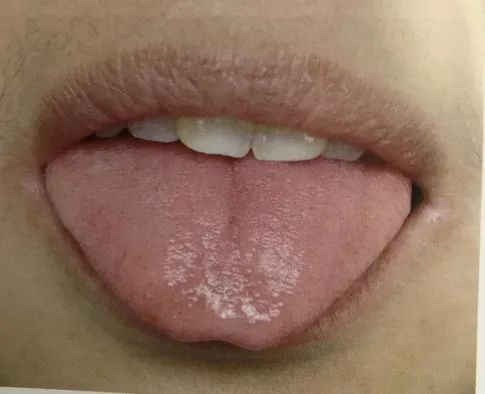
Red Thin Tongue (left): The tongue body is thin, red or dark red, dry with little or no coating; indicates deficiency of both qi and yin or excess fire due to yin deficiency.
Pale Thin Tongue (right): The tongue body is thin and pale; indicates often seen in long-term illness with deficiency of both qi and blood.
Cracked Tongue01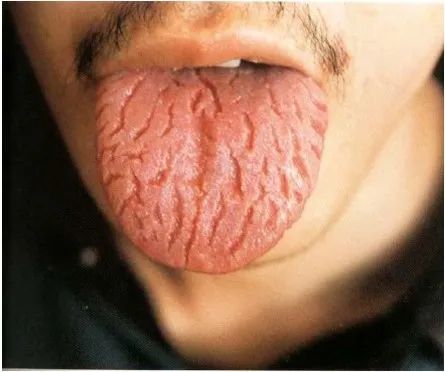
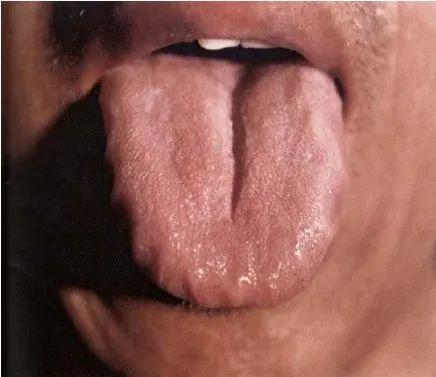
Cracked Tongue: Cracks without coating are often pathological (left); cracks with coating are often congenital (right); indicates deficiency of essence and blood, or yin deficiency with loss of nourishment.
A pale tongue with cracks indicates blood deficiency; a red or dark red tongue with cracks indicates excessive heat damaging fluids.
Punctured Tongue01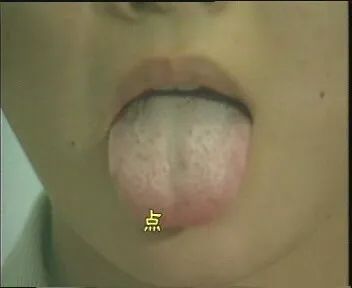
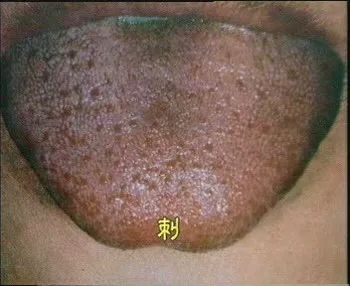
Punctured Tongue:Refers to the tongue papillae protruding like thorns, feeling prickly with red or yellow-black punctures, known as thorny tongue; indicates extreme heat in the organs or excessive heat in the blood.
Teeth-Marked Tongue01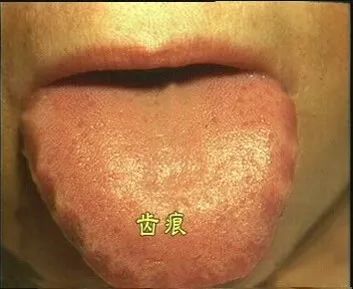

Teeth-Marked Tongue: The edges of the tongue show marks from teeth pressure.
A pale, plump tongue with a moist texture and teeth marks—indicates cold dampness obstructing, yang deficiency with water retention;
A pale red tongue with teeth marks—indicates spleen deficiency or qi deficiency;
A red swollen tongue with teeth marks—indicates damp-heat phlegm obstruction.
A pale red and tender tongue, not large but with slight teeth marks, may indicate congenital teeth-marked tongue, often seen in children or those with qi and blood deficiency.
 04Tongue State
04Tongue State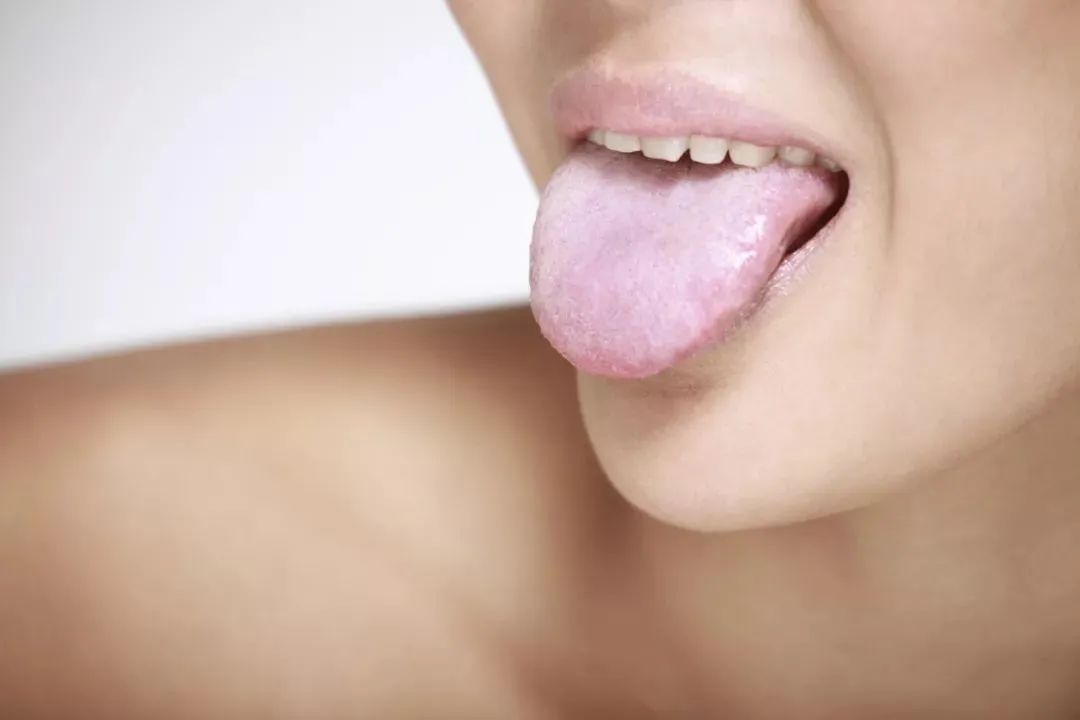
Tongue state refers to the dynamic of the tongue body, where the tongue moves freely and flexibly, indicating a normal tongue state. This suggests that the organ functions are vigorous, and qi and blood are sufficient, with smooth meridian flow. Common pathological tongue states include: flaccid, rigid, deviated, trembling, protruding, and shortened tongue.
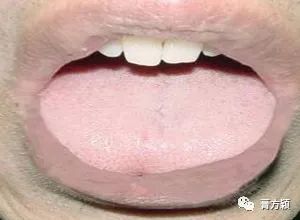 Flaccid Tongue
Flaccid Tongue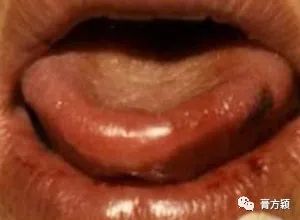 Rigid Tongue
Rigid Tongue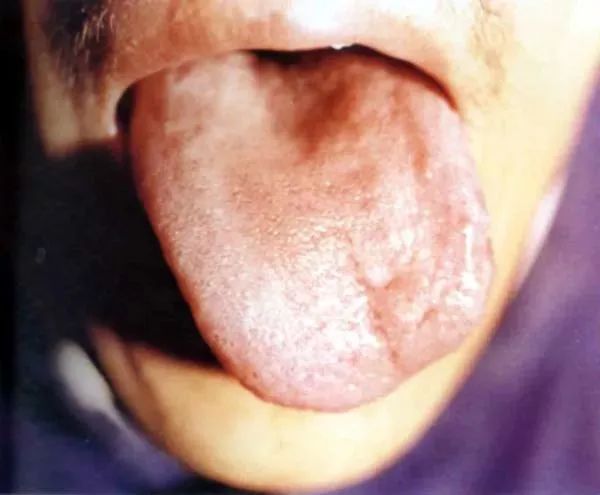 Deviated Tongue
Deviated Tongue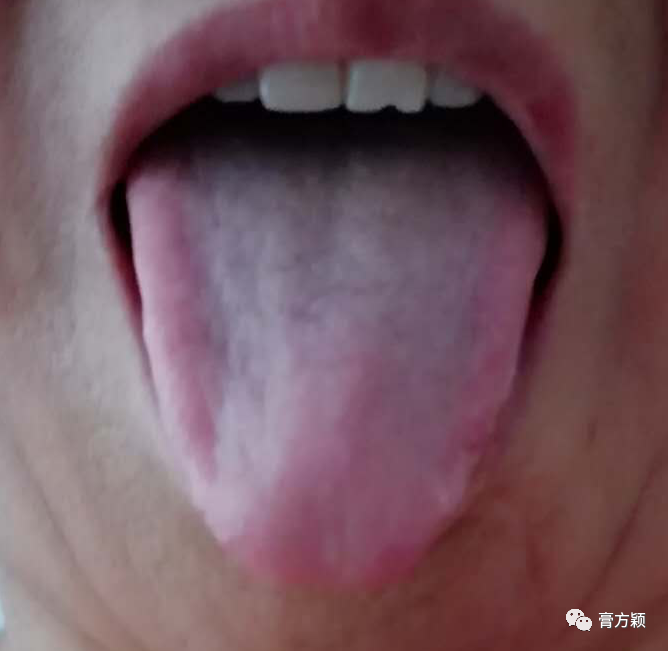 Trembling Tongue
Trembling Tongue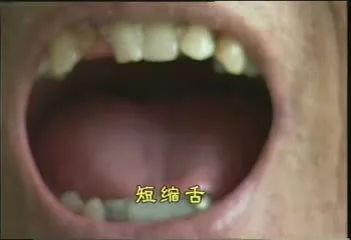 Shortened Tongue
Shortened Tongue
Flaccid Tongue (State): The tongue body is weak and lacks strength, unable to extend or retract freely. Commonly seen in yin injury or deficiency of both qi and blood.
Rigid Tongue (State): The tongue loses its softness, is difficult to bend or move, and is stiff and rigid. Commonly seen in heat entering the pericardium, or high fever injuring fluids, or phlegm obstructing the meridians.
Deviated Tongue: When extending the tongue, it tilts to one side, either left or right; commonly seen in stroke, dark phlegm, or as a precursor to stroke.
Trembling Tongue (State): The tongue trembles and shakes, unable to be controlled. In mild cases, it trembles only when extended; in severe cases, it trembles even when not extended; indicates internal wind of the liver. Can be caused by excessive heat, yang hyperactivity, yin deficiency, or blood deficiency.
Protruding Tongue: The tongue extends outside the mouth and does not retract immediately; this is called protruding tongue; if the tongue repeatedly protrudes and retracts, or licks the lips, it is called moving tongue. Protruding tongue can be seen in heart-attack due to epidemic toxins, or when vital energy is exhausted; moving tongue is often seen in severe heat or wind-heat precursors. Protruding and moving tongue can also be seen in children with developmental delays.
Shortened Tongue: The tongue body is rolled up, short, and tight, unable to extend. Shortened tongue often appears with flaccid tongue. It is often a sign of severe illness.

 Next Issue Preview: Today, I have briefly described tongue quality; in the next issue, we will explore what tongue coating is and what different coatings reflect about health conditions.
Next Issue Preview: Today, I have briefly described tongue quality; in the next issue, we will explore what tongue coating is and what different coatings reflect about health conditions.

